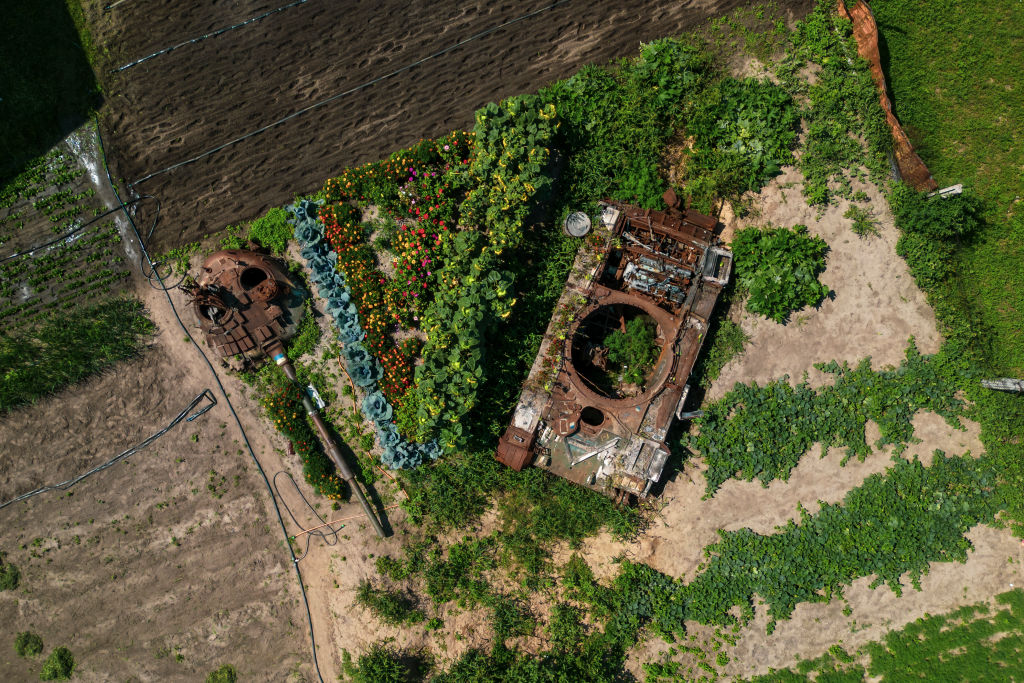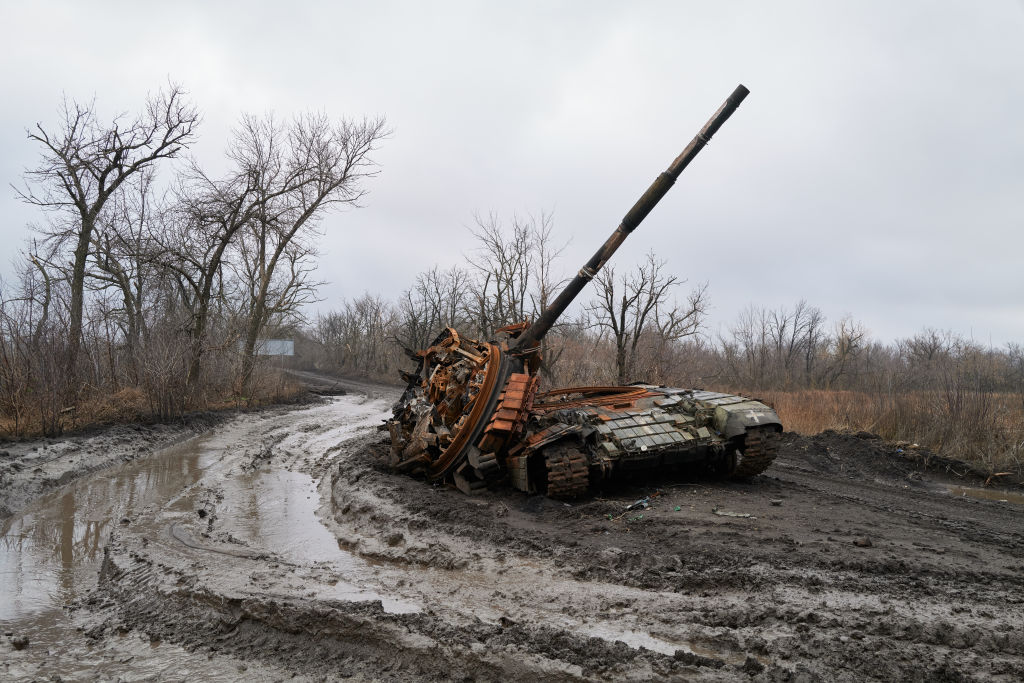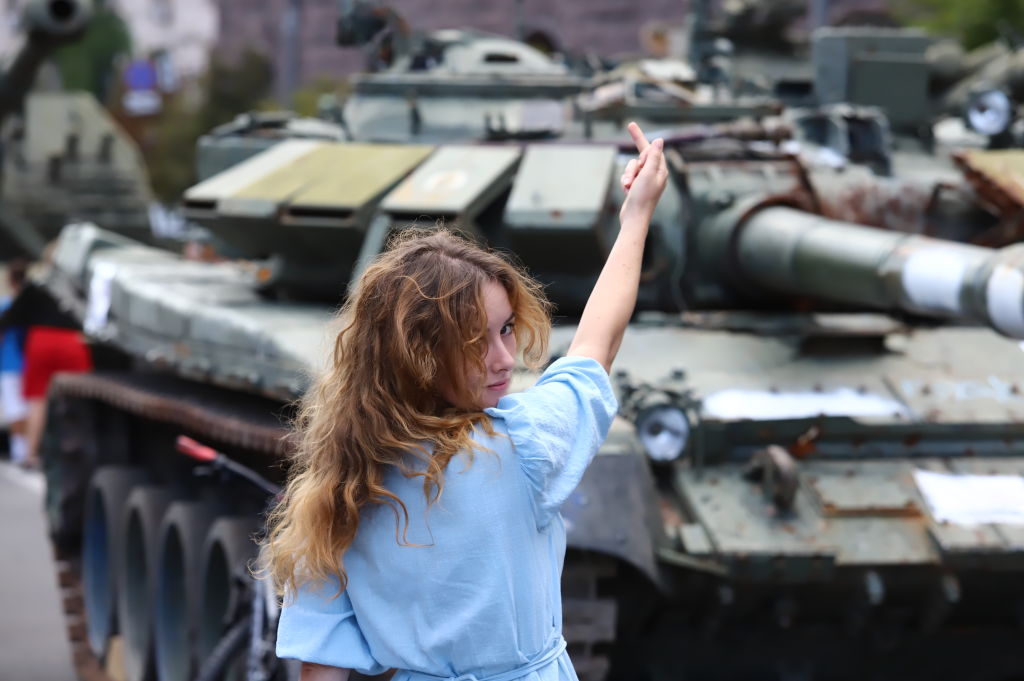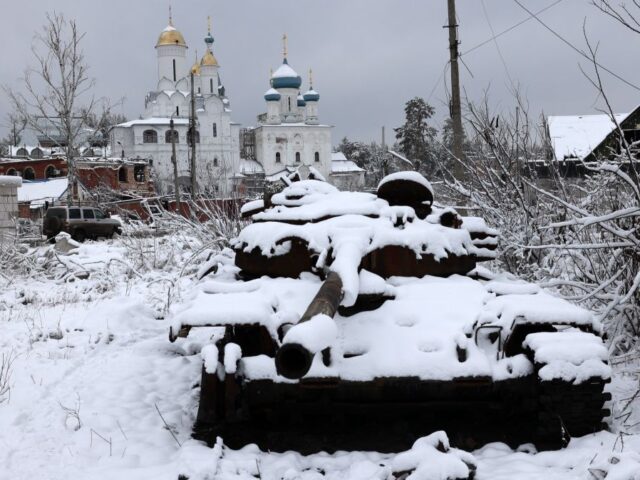Russia has now lost more tanks in the Ukraine war than it had at the start of the conflict, but its ability to regenerate through deep reserves means it can survive these levels of attrition for several more years, a top military think tank warns.
Ukraine has destroyed “around 1,120” Russian tanks in the past year, the International Institute For Strategic Studies (IISS) says. The military think tank, one of the world’s oldest, says these losses take Russian tanks destroyed since 2022 to some 3,000 units.
These striking figures don’t even include losses of other armoured fighting vehicles, like armoured personnel carriers. The IISS said Russia had lost 2,000 of them in the last year alone and nearly 8,800 since the war began.
Speaking at the launch of the IISS’s annual Military Balance publication, an assessment of global military power, Institute director Bastian Giegerich said of the figures: “To put that into perspective, Russia’s battlefield tank losses are now greater than the number it had when it launched its offensives in 2022.”
WWIII Watch: Europe Defence Spending Soars with Tanks, Missiles, Fighter Jets, Attack Helicopters, All on Order https://t.co/qS1FvBYyos
— Breitbart London (@BreitbartLondon) December 23, 2023

An aerial drone view shows a local residents raise vegetables and flowers next to a destroyed Russian tank, the remains of which lie in his garden in the village of Velyka Dymerka near Kyiv, Ukraine, August, 2023 (Photo by Maxym Marusenko/NurPhoto via Getty Images)
The number of Russian tank losses is greater than the number of tanks in frontline service all wealthy European states combined. But the figures underline the degree to which Ukraine’s armed forces have been able to inflict a war of attrition on the Russian invaders, and the utility of modern Western anti-tank weapons which have been provided to Kyiv by its sponsors in large numbers.
Yet the Russian army has not yet seen its tank force depleted by these enormous losses, and continues to bring more equipment into service. Giegerich said: “Russia’s losses have been significant… [but] Russia has taken equipment out of storage and pressed it into battle at times, at a rate of 100 tanks a month. Russia should be able to sustain that for about two to three more years.” The IISS’s handout on these figures further notes the two to three year estimate may be conservative, and it could continue to replace losses “even longer”.
While Russia is keeping the numbers of tanks available to its armed forces high, relying on refurbished Soviet-era stock means the quality of what it has to fight with is suffering. Henry Boyd, also of the Institute, said: “Russia, even pre-war, had to make sacrifices in the quality it wanted, particularly in the land domain in its weapons systems, in order to make quantity requirements.
“That’s only got worse for them since 2022. You can see older and older designs pulled out of store. Russia is, particularly in land, very dependent on its old Soviet-era legacy stores for meeting the demand for new armoured fighting vehicles, and artillery pieces for the conflict.” The IISS said Russia had managed to re-activate around 1,200 tanks this year.
Glen Grant of the Baltic Security Foundation says T-54/55s should not be dismissed, noting: “If you are in a built-up area, it is still a tank with a big gun and it still has got to be beaten. The round from that gun will take out the sides of buildings.” https://t.co/hRjihT5noh
— Breitbart London (@BreitbartLondon) March 27, 2023

AVDIIVKA, UKRAINE – DECEMBER 31: A Ukrainian tank is destroyed amid artillery shelling on December 31, 2023 in Avdiivka, Ukraine. The remaining residents of Avdiivka are living in basements of residential buildings rely on humanitarian aid. The city is facing attacks on three sides from Russian forces, including continuous bombings. (Photo by Pierre Crom/Getty Images)
The figures given by the IISS stand at odds with Ukraine’s own claimed battlefield victories. Kyiv asserts in state media bulletins that it has destroyed almost 6,500 Russian tanks and over 12,000 armoured vehicles in the war so far. Ukraine also claims to have “eliminated” nearly 400,000 “Russian invaders” — soldiers — in the course of the conflict.
Ukraine has also suffered losses of its own. But it has an advantage for now, Giegerich said, because while Russia pulls replenishment out of Soviet-era vehicle parks, seeing frontline quality dwindle, Ukraine’s reinforcements come from NATO stocks. While in some cases this has also been redundant Cold War-era equipment, Ukraine has also received large amounts of modern NATO material, seeing quality rise overall, even if this is “at the cost of greater logistic complexity”.
Thanks to donations, the IISS estimates Ukraine’s supply of tanks and armoured vehicles is also at or over the level it had at the start of the war, but “The situation for Ukraine’s land force-equipment evolution is also opaque, in some cases even more so because open-source imagery of battlefield losses is skewed on the Russian side”.
The comparative ability of both Russia and the greater West to keep up the pace of delivery for ‘new’ equipment for the Ukraine war also matters. Giegerich noted the West’s sanctions regime against Russia ” are something of a blunt instrument, often requiring years to produce an effect”, and Russia’s move to to a wartime economy has “produced results”.
Britain Warns West is Running Out of Weapons to Give Ukrainehttps://t.co/cO1fETsRAa
— Breitbart London (@BreitbartLondon) October 4, 2023

KYIV, UKRAINE – AUGUST 24: A woman gives a middle finger to destroyed Russian tank displayed on Khreschatyk Street during an exhibition on August 24, 2023 in Kyiv, Ukraine. On August 24, Ukraine celebrates its 1991 declaration of independence from the USSR. Since the beginning of the full-scale Russian invasion, Ukraine has been canceling all solemn events for the second year and instead holding a “parade” of destroyed enemy’s military equipment. (Photo by Oleksii Samsonov/Global Images Ukraine via Getty Images)
In Europe, meanwhile, the European Union’s pledge to deliver one million shells to Ukraine by next month appears to have failed, even with defence industry everywhere working at maximum capacity, leading to massive order backlogs. “Neither governments or industry were prepared for the war and are struggling to respond. Western governments have now recognised they let capacity to equip their armed forces to erode to a dangerous level”, said Giegerich.
The comments echo others by military and political leaders in Europe, who warn of a potential coming direct conflict with Russia itself. As previously reported:
…the most senior military officer in NATO [said] this month that European society had to prepare itself for war and that should conflict come it would not be a remote, out-of-sight incident dealt with by professional soldiers, but rather a “whole of society event” with civillian participation, as is the case in Ukraine.
In his bleak assesment, the top officer said: “What hasn’t happened is in our societies, the understanding that it is more than the military that has to be able to operate in a conflict or in a war. It is the whole of a society that will get involved whether we like it or not… the people, they have to understand they play a role. Society is part of the solution… you need to have water, you need to have a radio on batteries, you need to have a flashlight with batteries to make sure you can survive the first 36 hours. Things like that, that’s simple things but it starts there.”
Tanks for Nothing…https://t.co/JynmVaQaRq
— Breitbart London (@BreitbartLondon) January 6, 2024

COMMENTS
Please let us know if you're having issues with commenting.